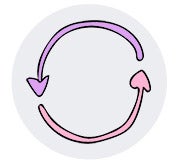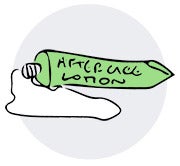Roadblocks to a great user experience
Roadblocks to a great user experience

In the first part of this series of UX articles, I wrote about some basic concepts of UX design, how important it is to an organisation to design an entire experience and what is means to have a less than optimal user experience. Now I'd like to explore some factors that can be detrimental to creating a great user experience and how you can avoid them.
As I see it, these are the main factors that can mean the difference between making something that your customers want to use and something that gets forgotten about shortly after it’s interacted with:
- Time constraints
- Budget constraints
- Having a content strategy
- Holistic vision
- Continuing the user experience
- Creating consistency across channels
- Too many cooks
- After care
Let’s explore this further…

Time constraints
There is often an urgency to get a project launched and out the door. Sometimes this is because there is an event or launch that the product has to coincide with. Other times it is due to timelines being created that are unrealistic or have been promised to those higher up by the project team.
By rushing a project, you’re at the risk of having vague or roughly defined requirements because decisions are having to me made too quickly or to have functionality built that hasn’t been tested properly.
To allow enough time to achieve a great result, everybody involved in the project needs to understand the impact of rushing to launch or skipping a step in the process. If you have a tight timeline, that’s completely fine, but acknowledge that’s the case and see what can be achieved in the time you have.
Stage the project
This is one way of getting around a short (or immoveable) timelines or budget constraints. This is where you prioritise and identify the ‘must haves’ vs. the ‘nice to haves’.
Ask yourself if it’s important that your project launches on time or that it has absolutely everything that you’d like. Sometimes if you are launching a new product or service to market, you have to launch with all functionality to get a competitive advantage. At other times, it’s important to get a basic product to market and build upon it later.
Sometimes sacrifices will need to be made in terms of functionality, however, that isn’t necessarily a bad thing.
Benefits of staging a project are:
- You have a product to launch with and can start to get customers
- You can start to interact with your customers and get their feedback about the project which might influence further functionality releases
- You can make a big deal of introducing new features with ‘mini launches.’
- The team can get excited about an impending launch date AND the planned feature releases down the track

Budget constraints
Understandably, every project has budget constraints as not everybody has an endless pot of money. Sometimes, though, cutting costs is a false economy, especially in the early steps of the process.
Not planning a site adequately in the beginning or not putting enough emphasis on the importance of this planning can be a disaster. Mistakes that are made can be costlier to rectify once a site is launched or worse still, launching with a bad user experience can turn customers away that can be difficult to regain later.
Consider what your budget can get you – maybe there is another way to do something right now that you can build upon later?

Having a content strategy ...or not
Content is super important to the user experience and not having the best content at site launch can spell disaster. This includes content that is well written and images that are carefully chosen.
Content is hard work and usually the people that are creating the content work within an organisation, with other role responsibilities. It is understandable that at times they can be overwhelmed with the task.
Start writing and gathering content early. If resources are not available to create content, consider what is actually achievable by your team during the planning stage to put less pressure on everybody. Consider outsourcing to a copywriter or start your content creation right after the planning stage so it’s not left until the last minute.
Starting early with Kentico Draft
Getting content together is a common problem amongst organisations. The Kentico CMS have an add-on to their product offering called Kentico Draft which allows content editors to edit their website content within the context of the live website at a much earlier stage in the development process, reducing delays in project delivery. Read more about it in this article >

Having a holistic vision... or not
Some elements are commonly overlooked by teams and include error messages, thank you messages and email content (especially autoresponders). The user experience should encompass every bit of text that you put on a website as the tone that an error message or thank you page is presented to the user matters greatly to the user experience.
Look at your development site map and get a list of the content that the user sees after they perform an action on your site and write friendly, well thought out content for each. It’ll make a world of difference because the user (subconsciously or not) will think that every interaction of their customers matters to you.

Continuing the user experience ...or not
Sometimes bits of content from a third party are used within a page, and the look and feel of that content are controlled by someone other than a site owner. I’m talking here about external forms, surveys, videos, calculators and other external inclusions either within the pages of your site or branded with your logo.
If these elements are used, it is important that they themselves use best practices in the way that they present the information to ensure that a good user experience carries through all sections of the site. If the element or layout is any way confusing to the user, then it may have to be re-skinned to fall in line with website expectations. Don’t overlook these elements as they can break the flow of a good user experience.

Creating consistency across channels
If your online user experience is outstanding, make sure that this is followed up with a great offline experience.
If a customer buys a product on your website via a well designed, easy to use interface, make sure they have a pleasurable experience if they call you or interact with you in the storefront or at a branch.
Test your offline user experience by putting yourself in your customer’s shoes. Order something on your website or call the call centre with an issue anonymously and see what response you get. Does it contribute to a great user experience?

Too many cooks
You know the saying. This is essentially ‘design by committee’ either where everyone has their say or going along with what the CEO likes. I get that there is a head honcho in every organisation and as long as their view reflects that of the project’s users, that fine. More often than not though, it’s not the case.
Listen to your users, the design team and test to validate. Only then can you really know what the user wants.

After care
Lastly, just like when you get a new car, you need to care about your project after launch. Frequently updating it, making sure all elements that are added are consistent and meet the brand values and ensuring content is not haphazardly added as a website grows or new people come along to manage it is the key to this step. Have a long term strategy and know who will manage the project after it launches and the dust has settled.
So, as you can see, there are many little things that you can do to create (and maintain) a great user experience. Consider these factors and work around them if they affect your project, and you’ll be on your way to happy users!
Great UX. What's stopping you?
This is Part 2 of the UX series - Read Part 1: What is UX Design and why should you care?

